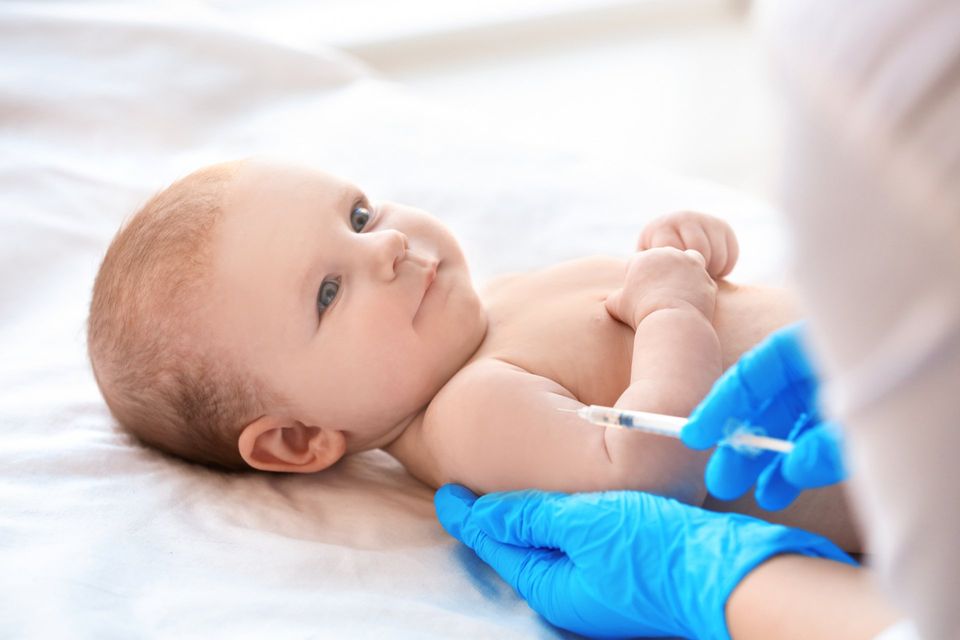What Do Child Vaccines Protect Against? 2021 Infant Vaccine Schedule
What Do Child Vaccines Protect Against?
2021 Infant Vaccine Schedule
Most of us understand the need for vaccines as we navigate the COVID-19 vaccine rollout. Thankfully, many severe and even deadly illnesses have disappeared due to successful and safe vaccines.
For instance, diphtheria – a bacterial disease that can lead to respiratory distress, heart failure, nerve damage , and even death if untreated – is now almost unheard of in the United States because of the vaccine. However, before the vaccine, the 1921 outbreak led to 206,000 reported cases and 15,520 recorded deaths. A high percentage of those cases were children.
Source:
College of Physicians of Philadelphia: The History of Vaccines
Why So Many Vaccinations?
Vaccines help keep our children safe and healthy , but it’s essential to get them at the correct time . Over the years, the infant and pediatric vaccine schedule has been well researched to achieve maximum protection and safety for our little ones.
I know you receive a full binder’s worth of resources and materials after your baby is born, so here’s a handy cheat sheet with the vaccine schedule for birth to 18 months.
First, here’s a quick overview of the diseases your child is protected against:
Hepatitis B virus (HBV) is a severe but preventable liver infection contracted from infectious bodily fluids. It causes symptoms such as jaundice, stomach pain, vomiting, diarrhea, joint pain, fever, dark urine, and loss of appetite.
Rotavirus is one of the most common stomach viruses that causes vomiting, diarrhea, and stomach pain, which can lead to dehydration. This vaccine wears off over time, but it protects your baby when they’re most at-risk. (The vaccine does not protect against the Norovirus, another common stomach virus that does not yet have a vaccine.)
Diphtheria is a bacterial infection that creates a toxin that kills healthy tissue and coats the back of the throat, tonsils, and nose with thick gray matter, making it hard to breathe. It is preventable by vaccine and treatable with antibiotics. If the illness goes untreated, the toxin can enter the bloodstream and cause kidney, heart, and never damage, leading to death.
Tetanus is an incurable (but preventable by vaccine and proper wound care) bacterial illness that can lead to nerve damage and death. It causes difficulty breathing and painful muscle tightness. While most cases come from deep cuts or burns, the bacteria are also contagious through the soil, saliva, and dust (which children often touch).
Pertussis/Whooping Cough is a bacterial illness that’s highly contagious in kids. It’s especially dangerous, even fatal, for infants. It causes harsh, uncontrollable coughing that leads to difficulty breathing and a deep “whooping” sound. The illness often starts like a common cold with a runny nose, congestion, cough, and maybe a fever, but it worsens after 7-14 days, causing a severe cough and thick mucus. It’s harder to detect in adults with stronger airways and immune systems, so those in contact with newborns and infants should get vaccinated.
Haemophilus Influenzae Type B is a virus that can cause a wide range of symptoms and degrees of severity. It is more prevalent in children under five. Mild cases may cause ear infections or bronchitis, while severe cases infect the bloodstream and cause deadly bacterial meningitis that attacks the brain, spinal cord, and nervous system. HIB can also cause severe throat pain and swelling, pneumonia, infections to various systems such as the heart, bones, and joints.
Streptococcus pneumoniae (pneumococcal disease) is a serious and highly contagious bacterial illness that can lead to a wide array of infections, including infections of the lungs, ears, sinuses, brain, nervous system, and blood. The disease can cause fever, joint pain, shortness of breath, stiff neck, and confusion. In severe cases, the bacteria can cause hearing loss, brain damage, or death.
Polio is a contagious and potentially life-threatening virus that infects the spinal cord and nervous system, causing paralysis or death. Some who contract the illness do not have symptoms (but are still contagious); however, those who do have symptoms typically experience disabling paralysis with initial symptoms of fatigue, fever, flu-like symptoms, fainting, and severe muscle weakness or quivers.
Influenza (the flu) is a virus that causes varying degrees of severity, from mild to potentially fatal among at-risk groups (such as infants). Symptoms may include fever, sore throat, cough, runny nose, and muscle aches. It is only partially preventable by vaccine since strains change every year.
Measles is a viral infection that causes a dry cough, runny nose, sore throat, watery eyes (or pink eye), and later a red, blotchy skin rash and high fever. While many recover on their own, infants may develop complications like pneumonia or encephalitis. According to the CDC, “About 1 in 5 unvaccinated people in the U.S. who get measles hospitalized.”
Mumps is a contagious viral disease that attacks the salivary glands, causing painful facial swelling, fever, headache, fatigue, and appetite loss that last for about two weeks.
Rubella is a contagious viral illness that causes a mild three-day rash, fever, headache, and runny nose. However, it can lead to severe complications for unborn babies whose mothers have contracted the virus. Complications include growth delays, mental disabilities, heart and organ defects, deafness, and cataracts. Rubella was declared eradicated in the U.S., and it’s essential to keep it that way to prevent complications for babies in utero.
Varicella (aka chickenpox) is a viral illness that causes an itchy rash and blisters on the whole body. It may also cause fever, headache, and fatigue. Chickenpox is generally a mild to moderate illness for most people, but it can cause complications or secondary infections in at-risk groups, such as infants and older adults.
Hepatitis A is a very contagious viral liver infection spread through the stool and blood. The infection can last two to six months and causes symptoms such as jaundice, stomach pain, vomiting, diarrhea, joint pain, fever, dark urine, and loss of appetite.
Vaccine Schedule for Birth to 18 Months Old
Birth
At birth, your child will receive (with your consent):
- 1st dose of Hepatitis B vaccine (HepB)
2 Months
While it looks like a lot, most babies do great with mild symptoms. The most common vaccine side effects are irritability, low fever, and some redness at the injection site. Call your pediatrician if the fever lasts more than 24-48 hours, is higher than 104 degrees, or has any other symptoms, such as constant crying, rash, or a red streak at the injection site. If your child has a fever over 102 degrees, you may administer infant Tylenol. At your child’s two-month appointment, your child will receive:
- 2nd dose of Hepatitis B vaccine (HepB)
- 1st dose of the oral Rotavirus vaccine (RV1 – a 2-dose vaccine; or RV5 – a 3-dose vaccine)
- 1st dose of Diphtheria, Tetanus, and Acellular (inactivated/dead) Pertussis vaccine (DTaP)
- 1st dose of Haemophilus Influenzae Type B vaccine (Hib)
- 1st dose of Pneumococcal Conjugate vaccine (PCV13)
- 1st dose of Inactivated Poliovirus vaccine (IPV)
4 Months
After the last round, you’ll have an idea of how your baby will respond to injections. These are all 2nd doses of the same vaccines. You can use infant Tylenol and a cool compress if your baby has a hard time. This month, your child should receive:
- 2nd dose of the oral Rotavirus vaccine (RV1 – a 2-dose vaccine; or RV5 – a 3-dose vaccine)
- 2nd dose of Diphtheria, Tetanus, and Acellular (inactivated/dead) Pertussis vaccine (DTaP)
- 2nd dose of Haemophilus Influenzae Type B vaccine (Hib)
- 2nd dose of Pneumococcal Conjugate vaccine (PCV13)
- 2nd dose of Inactivated Poliovirus vaccine (IPV)
6 Months
This month varies a bit by the type of vaccine given initially ( some come in a 2-dose series, while others are in a 3-dose series ). This month, your child may receive:
- 3rd dose of the oral Rotavirus vaccine only if you’re doing the RV5 3-dose vaccine
- 3rd dose of Diphtheria, Tetanus, and Acellular (inactivated/dead) Pertussis vaccine (DTaP)
- 3rd dose of Haemophilus Influenzae Type B (Hib) only if you’re doing the 4-dose series (not applicable for 3-dose series)
- 3rd dose of Pneumococcal Conjugate vaccine (PCV13)
*Your child is also old enough to receive the flu vaccine at six months if applicable.
9 Months
Yay!! No pokes!
*Your doctor may decide to administer the 3rd doses of the HepB and poliovirus vaccines this month.
12 Months
If you did not receive the 3rd doses of HepB and poliovirus, your child will probably receive:
- 3rd dose of Hepatitis B vaccine (HepB)
- 3rd of 4th dose of Haemophilus Influenzae Type B vaccine (Hib)
- 4th dose of Pneumococcal Conjugate vaccine (PCV13)
- 3rd dose of Inactivated Poliovirus vaccine (IPV)
15 Months
You’re almost done! This month, your child may receive:
- 4th dose of Diphtheria, Tetanus, and Acellular (inactivated/dead) Pertussis vaccine (DTaP)
- 1st dose Measles, Mumps, and Rubella vaccine (MMR)
- 1st dose of Varicella vaccine (VAR)
- 1st dose of Hepatitis A vaccine (HepA)
18 Months
You made it! This is the end. At least for a couple of years. Depending on your pediatrician’s schedule, your child may receive:
- 2nd dose of Hepatitis A vaccine (HepA)
*Note: After the 6-month appointment, there’s some flexibility on when to receive follow-up doses. It may not look exactly like this, but the number of doses for each vaccine will remain the same. Follow your pediatrician’s recommended schedule for your child.
**See the CDC’s full schedule, delayed schedule, and schedule by medical indications here .






